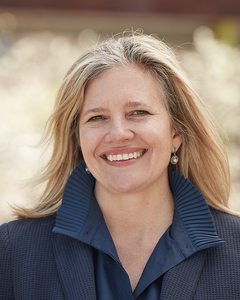Call Intelligence Improves Conversions by 50 Percent for Mobile Urgent Care Provider
// By Jane Weber Brubaker //

As measurability, attribution, and ROI become imperatives for hospital marketers, one key channel — the phone — has yielded less actionable information than digital channels that are far more trackable. In healthcare, consumers may begin their search for a provider online, but eventually the journey often still leads them to make a call to gather more information or schedule an appointment.
For some organizations, the phone is the primary channel consumers use to make contact, making the phone experience that much more critical to success. Dispatch Health provides in-home urgent care services as an alternative to an ER visit or a nonemergency 911 transport. “It is designed to go after the very specific problem of ER over-utilization,” says Andrea Pearson, chief marketing officer. The company currently serves seven markets: Richmond, Houston, Oklahoma City, Phoenix, Denver/Boulder, Colorado Springs, and Las Vegas.

Andrea Pearson, chief marketing officer at Dispatch Health
When Pearson came on board six months ago, her goal was to make sure that everything could be measured. “Whether that was a business meeting with a senior living community or a postcard mailing with an ACO, we wanted to be able to tie that volume back and understand how that channel and specific tactic were working, and what we should be doing to optimize it,” she says.
She turned to Invoca, a call intelligence platform. Invoca, whose clients include Mayo Clinic, recently received recognition as a “strong performer” in The Forrester New Wave™: AI-Fueled Speech Analytics Solutions, Q2 2018, which reports: “Invoca leverages machine learning-based speech analytics to classify calls and measure their quality and outcomes to improve marketing performance as well as handle related use cases in sales.”
“Invoca was key to understanding where current volume was coming from because we’re able to put a trackable phone number on everything we do,” Pearson says.
Within 90 days of implementing Invoca, Dispatch Health was able to convert 50 percent more consumers. “The call data was key to improving not just call conversion but also our website and requests made from our digital channels, from improving ad copy and landing pages to the phone call handling,” says Pearson.
About Dispatch Health
Dispatch Health was founded in 2013 by Dr. Mark Prather, who worked as an ER physician for 24 years. “He saw that a lot of what gets seen in the emergency room doesn’t need to be seen in such a high-cost environment,” says Pearson. “And he went one step further, noticing that often those patients, who were often frail and aging, were sometimes in worse shape than when they first arrived.”
Embedding with a local 911 system in Denver, Prather was able to prove that about 20 percent of the cases originating with the local 911 system could be treated at home with better outcomes and lower cost.
How It Works
When a patient or provider calls in, an agent assesses the situation using risk-scoring criteria to determine if it’s safe to treat that patient. “Somewhere between 5 and 8 percent of the time we will escalate that patient and request that they visit an ER,” Pearson says.
If the situation is appropriate for in-home urgent care, Dispatch Health sends a nurse practitioner or physician assistant and an EMT in one to two hours. An on-call physician backs the team. On average, the team spends 45 minutes per visit in the patient’s home.
High Patient and Provider Satisfaction
Dispatch Health has treated 28,000 patients. The company’s Net Promoter Score, which asks if patients would recommend the service to others, is between 90 and 95. “What people love about it is they’re getting exceptional care and they get to do it from their sofa or their bed,” Pearson says.
Providers also have high satisfaction. “You can imagine the quality of spending 45 minutes or more with a patient really strikes a chord with providers in terms of the care they are able to give versus in a busier clinical setting,” says Pearson.
Key Market Segments
Dispatch Health serves four primary audiences:
- Senior living communities
- Health systems and care organizations assuming risk for a population
- Employers
- Consumers
“I came into the company to focus initially on how we understand each of those channels, and how we can optimize them,” says Pearson. “Are we doing the work we should be doing in each of those channels so that our efforts are translating to volume?” With Invoca’s call-tracking features, Pearson can see where the volume is coming from, and what happens on the calls.

Julia Stead, chief marketing officer of Invoca
Julia Stead is chief marketing officer of Invoca. “Healthcare is such a personalized kind of service industry. The larger volume of conversions come from those human-to-human phone conversations,” she says. “With our call-tracking analytics solutions, you’re able to, as a marketer, know at an individual caller level which marketing campaign drove [the person] to call, whether it was a certain keyword, a print flyer, or an email campaign.”
Tailored Communications
This granular level of information helps Pearson adjust marketing messaging to fit each audience. She gives an example of the unique needs of a Medicare Advantage member versus a young mother with a 5-year-old with a spiking fever. “They need different information and we’re able to get that by listening to those calls. Then we can do a better job on the particular mailing or the digital landing page or even on some of our social media outreach in addressing needs for various segments of population.”
Another insight is that callers responding to digital campaigns want information fast. Pearson describes the typical mindset of a digital caller: “Someone better pick up the phone in the first 30 seconds. I need to get through the onboarding process and know you’re going to be at my door in 45 minutes.”
The Nature of Click-to-Call
As digital usage continues to shift to mobile devices, click-to-call is both an opportunity and a challenge. “We have to be able to answer four questions: Can we treat you? How long does it take? Who comes? Who pays for it?” says Pearson. “That’s hard to do in a click-to-call situation where you’re advertising essentially ‘Call Now.’” To better handle these calls, Pearson believes that providing information and education online and walking consumers through the process before they click will improve the experience and results.
AI and the Power of Prediction
Invoca’s AI capabilities allow marketers to understand in real time how campaigns perform. “The AI is listening to millions of calls and coming up with highly accurate algorithms,” says Stead. “It can tell at the end of the call with an extremely high accuracy rate what the outcome of the call will be, whether that person will have booked an appointment, set up a consultation, or registered for new services.”
With this predictive conversion data, marketers can take actions to optimize campaigns immediately. Before this was available, closed-loop reporting on call conversions could take weeks to circulate back to the marketer, and by then, the campaign might be over.
Personalization
With call intelligence, marketers can deliver more personalized experiences when callers phone back or visit the health system website. “If it’s a returning caller, we can route them immediately to their local physician or the person that they’ve been previously in contact with instead of sending them through a lengthy IVR system,” says Stead. If the person visits the health system website, Invoca’s technology enables the system to serve up a personalized landing page addressing the caller’s specific pain point.
Marketers can follow up appropriately based on real-time information on caller actions. “The marketer can decide not to re-target the person because they booked their appointment by phone, and instead they can send them a ‘thank you’ email or a welcome message,” Stead explains.
For new callers, Invoca’s technology allows agents to see which search terms callers used, or which landing page they came from, and tailor communications accordingly. The platform also taps into available caller I.D. data and serves it up to agents in real time. “Typically, this can be things like demographic data, where they’re calling from, what’s their household income, states, mobile versus landline,” says Stead. Invoca is HIPAA-compliant, but Stead notes that the desire to capture different levels of data can vary widely depending on the healthcare customer.
“We’re really focused on that marketing optimization use case and the customer experience, routing the calls to the right people, providing data context from what happened on the call to serve up a more personalized follow-up digital experience,” Stead says.
“Invoca has really helped us across all channels to understand how to educate, segment, and provide all the information someone needs so that on the day someone needs our help, it’s a really efficient phone call,” says Pearson.
Jane Weber Brubaker is executive editor of Plain-English Health Care, a division of Plain-English Media. She directs editorial content for eHealthcare Strategy & Trends and Strategic Health Care Marketing, and is past chair of the eHealthcare Leadership Awards. Email her at jane@plainenglishmedia.com.

